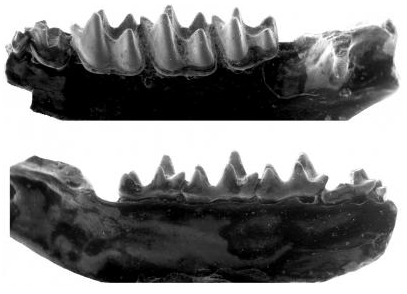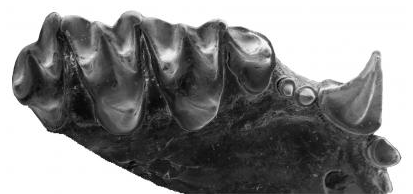Sucker-Footed Bat Relatives Discovered In Egypt, ‘Ancient Lineage’ Proven By Fossil Find [PHOTO]

Madagascar sucker-footed bats may have once lived outside their native home, a new study suggests.
The species is known for the sessile pads on their wrists that allow them to stick to leaf surfaces and roost head-up in the palm forests of the country. New findings published in PLOS ONE reveal that the discovery of two extinct relatives of the sucker-footed bats found in Egypt proves the unique species was once more common than it is today.
"We've assumed for a long time that they were an ancient lineage based on DNA sequence studies that have placed them close to very old groups in the bat family tree," Nancy Simmons, study co-author and curator-in-charge of the American Museum of Natural History's Mammalogy Department, said in a statement.

The fossilized remains of the two extinct bat species were excavated from the Fayum Depression in Egypt's Western Desert -- an area rife with relics from temples built for pharaohs, Roman city ruins and hulls of World War II tanks. The fossilized teeth show the bats fed on insects, like their living relatives.
The two species found, Phasmatonycteris phiomensis and P. butleri, lived 37 million years ago and 30 million years ago. At the time, North Africa was a more tropical environment that housed a diverse range of mammals, including early relatives of elephants.
"The habitat was probably fairly forested, and there was likely a proto-Nile River, a big river that led into the ancient Tethys Ocean," Gregg Gunnell, director of the Duke University Lemur Center's Division of Fossil Primates, said.
While the fossilized remains can’t reveal whether the ancient bats had sucker-feet, the findings prove the bat family is one of the most primitive members of a lineage that is prevalent throughout South America. Scientists believe the bats first arose in Africa, where they later migrated to Australia, Antarctica and then to South America.
Sucker-footed bats are divided into two species -- Myzopoda aurita and M. schliemanni -- found only in Madagascar. While scientists first believed suction held the bats upright in curled leaves, a recent discovery proved they rely on wet suction to stick to surfaces.
"The name of this bat is wrong," Daniel Riskin, an evolutionary biologist at Brown University in Rhode Island, told National Geographic. "It's not the sucker-footed bat, but the wet-adhesion bat. But it's been named in Latin, so you can't change it."
© Copyright IBTimes 2024. All rights reserved.






















